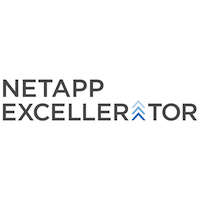
NetApp Excellerator
View Brand PublisherHere’s how Datamotive is solving the mobility and business continuity problems with hybrid, multi-clouds
Datamotive solves the interoperability challenges that come with hybrid, multi-clouds by enabling seamless mobility of entire workloads across clouds in a secure manner.
Software Defined Data Centers (SDDC) have become an integral part of Enterprise IT since the past decade and have driven the ‘Cloud’ model. Today, this has manifested into various strategies, and approaches - Private Clouds, Public Clouds, Edge Clouds, Hybrid Clouds, Multi-Clouds, and the list goes on. But eventually, everyone agrees that a hybrid, multi-cloud strategy will be (if not already) the most predominant approach for enterprises.
‘Cloud’ is the magic trick
Last few years have been a litmus test for these IT strategies. Coping with the global pandemic, working with limited budgets and resources, securing against malware and ransomware attacks, improving their security and resiliency footprint, being prepared for regulatory compliances, and all this while enabling faster innovation and faster adoption of newer technologies. What Enterprise CIOs, CISOs and IT teams have pulled off is nothing short of magic. Of course, it goes without saying that the ‘Cloud’ is the magic ingredient here. So what exactly are enterprises doing? Before we jump into the details, first let's define our clouds and common usage models:
Hybrid Clouds - Commonly described as the strategy of utilizing cloud infrastructure from both a private and a public cloud provider, essentially a hyper-scaler (your AWS, Azure and Google Clouds of the world). The types of combinations possible between private and public clouds are varied, but most enterprises utilize a ‘functional distribution’ strategy where specific enterprise workloads are deployed on either private or public clouds. They create ‘functional silos’, e.g. business critical workloads are kept on-premise, while supporting tier 2 workloads, like analytics, dev and test, business functions application workloads are put on the public clouds. There are some other models like ‘environment propagation’ where enterprises create parallel environments in which applications can move easily between private and public clouds, but these require similar platforms on both sides and are not very common.
Multi-Clouds - The terms Multi Cloud and Hybrid Cloud are often used interchangeably, but technically, a multi-cloud environment is when an enterprise is using infrastructure services from two or more public cloud vendors. But again, these are mostly just silos. For instance, enterprises use Azure for their Microsoft-based workloads, and Google Cloud for their containerised and analytics workloads.
Hybrid, Multi-Clouds - As the name suggests, this strategy is a synergy of hybrid clouds but with more than one public cloud hyper-scaler. Here again, the siloed ‘Functional Distribution’ approach is the most predominant utilization model.
Why enterprises choose a hybrid multi-cloud strategy
As hybrid cloud models mature, enterprises are realizing that the key is to put together an IT infrastructure environment that is,
- Manageable
- Programmable
- Dynamic
- Scalable, and most importantly,
- Cost-Effective
We are already seeing public cloud-first enterprises like AirBnB, Uber, Netflix etc. moving into a hybrid, multi-cloud model, with some workloads on hyperscalers, and some on-premise, managed by these respective enterprises. On the other hand, quite a few on-premise operators like HDFC, Telstra, Royal Bank of Scotland etc. are increasingly leveraging public clouds to get to the hybrid, multi-cloud model.
And nearly all, adopt this hybrid, multi-cloud strategy for the following reasons:
1.Avoiding vendor lock-in
Organizations commit to a hybrid, multi-cloud strategy to take advantage of all the provider’s latest technologies. They typically choose the best-performing or most cost-effective services for specific application workloads and use cases. The biggest challenge today is that workloads are not portable or interoperable between these clouds, which limits the agility between clouds.
2.Overcoming data gravity
Enterprises are storing ridiculous volumes of data with their cloud service provider. Data gravity could force you to deploy related apps and services with the same provider – even when there are less expensive options available in other clouds. Overcoming data gravity may seem simple but hardly ever. Data is more often than not tied to your applications and moving applications and workloads to other clouds is tedious, expensive, and requires serious downtimes.
3.Scalability with cloud scale economics
Every enterprise wants the best within the budgets they have and the hybrid, multi-cloud strategy gives them that freedom. For example, it would enable an organization to take the advantage of AWS spot instances and stable computing power at a low price but still run VMs 24/7/365 on their private clouds. Your business can scale up or scale down, your operational and storage needs quickly to suit the situation, allowing flexibility while still maintaining your budgets.
Understanding the challenges
It’s quite clear that hybrid, multi-clouds strategy is the future for enterprise IT. But all these new technologies, platforms, and clouds increase operational complexity and this mostly always manifests into a security vulnerability or a service outage. The key challenge in these environments stems from the fact that workloads are not inherently portable across clouds. Your data is tied to the applications, applications are tied to the operating systems they run on, and the operating systems are tied to the underlying cloud and virtualisation platforms.
This lack of interoperability and seamless mobility prevents us from utilizing the true potential of these hybrid, multi-cloud environments. Hence, most organizations adopt our earlier defined siloed ‘Functional Distribution’ architecture. Reaching to the ‘Environment Propagation’ architecture for most organizations is either too expensive or even if you have the budgets, you have to throw your availability SLAs out of the window. Even Gartner, in its recent 2021 tech report has identified ‘Cloud Portability’ as a required technology innovation trigger.
The groundbreaking solution
Hybrid multi-cloud and technology product startup is solving exactly these problems and unlocking hybrid multi-cloud environments. Datamotive solves the interoperability challenges by enabling seamless mobility of entire workloads across and between ANY cloud to ANY cloud, natively, securely, and instantly. To elaborate, Datamotive enables, for e.g. a VMware VM to be replicated in an online and agentless manner to AWS and in case of a disaster, or migration, recover the VMware VM as a native EC2 instance, in 10 minutes regardless of the size of the VM. It could be a 200 GB VM or a 10 TB VM, recovery is always in 10 minutes flat.
Datamotive has solved this interoperability issue and helps enterprises hop from one cloud to another seamlessly, enabling a completely new operating model for hybrid, multi-cloud environments.
DRaaS, Ransomware Recovery, Migrations, DevOps and DevSecOps are significantly simplified with Datamotive.
- Enterprises get freedom from vendor lock-ins, and get the negotiation leverage back.
- Datamotive is agentless, and hence, Zero Trust security is easier to achieve with no security holes, and no production performance impact.
- And most importantly, Datamotive enables public cloud platforms like AWS and GCP to be utilized as the DR or Backup site. No need for dedicated hardware, platforms or entire Backup/DR sites to ensure availability and resiliency of your applications and services.
Pune-headquartered Datamotive is backed by leading Venture Capital companies and is also a part of the NetApp Excellerator program. A variety of enterprises are using Datamotive in various capacities, from Disaster Recovery solutions for VMware workloads to AWS (as DR site), to migrating AWS workloads to GCP and/or VMware.
Cohort 9 of NetApp Excellerator
Datamotive was a part of the latest cohort 9 of NetApp Excellerator. The startup’s unique product with groundbreaking technology set them apart from their competition. Netapp, AWS, VMware have shown immense interest and belief in the product which goes on to strengthen the brewing story of success that lies ahead for Datamotive. Being part of Cohort 9 helped the startup get industry insights and market access, garner attention from global investors, and expand its business.
If you want to register for NetApp Excellerator Cohort 10, click here







